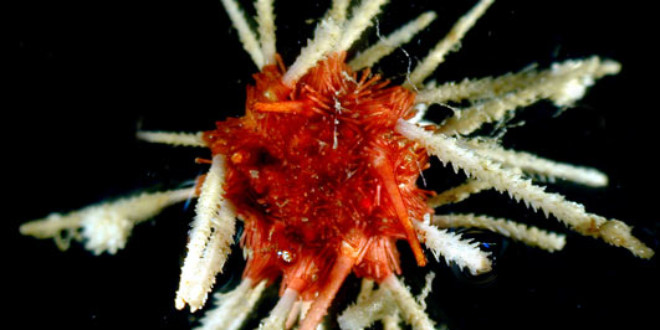Antarctica”s marine ecosystem is at higher risk than almost anywhere else on planet. Thriving only in near-freezing waters, creatures such as Antarctic sea spiders, limpets or sea urchins may be among the most vulnerable on the planet to global warming, as the Southern Ocean heats up.
Isolated for millions of years by the chill currents, exotic animals on the seabed around Antarctica — including giant marine woodlice and sea lemons, a sort of bright yellow slug — are among the least studied in the world.
Now scientists on the Antarctic Peninsula are finding worrying signs that they can only tolerate a very narrow temperature band — and the waters have already warmed by about 1 Celsius (1.6 Fahrenheit) in the past 50 years.
“Because this is one of the most rapidly warming areas on the planet and because the animals are so temperature sensitive…this marine ecosystem is at higher risk than almost anywhere else on the planet,” said Simon Morley, a marine biologist at the British Antarctic Survey at Rothera.
In warmer waters, laboratory studies show that clams and limpets lose the ability to right themselves if they land upside down. Such a skill is vital in Antarctica’s shallows, where icebergs regularly scrape across rocks on the seabed.
The U.N. Climate Panel has a best estimate that air temperatures may rise by between 1.8 and 4.0 Celsius this century, due to a build-up of greenhouse gases.
The inshore habitat is largely separate from the open ocean, where penguins and whales feed on krill that in turn consume algae. Big predators in the shallows are starfish and fish such as Antarctic cod.
In Antarctica, another linked threat is from icebergs that now scour each part of the shallow seabed on average once a year — smashing many of the creatures.
Another worry is that non-native species will arrive off Antarctica if the oceans warm, perhaps organisms floating on a piece of plastic or stuck on the hull of a ship. Invasive species, usually transported by humans, can oust local species.
(From abcnews.go.com – Rothera Base, Antarctica – By ALISTER DOYLE)
 Ocean Sentry
Ocean Sentry




